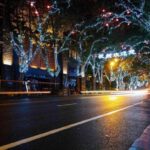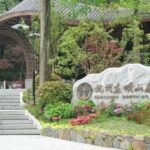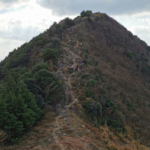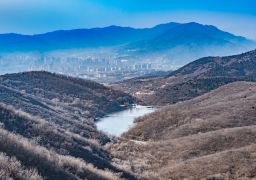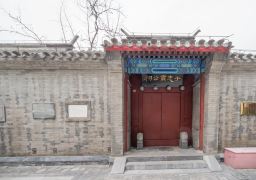Chicheng Mountain, also known as Burned Mountain, is a solitary mountain remaining after the erosion of sedimentary rocks. It is named for its red color and rock formations arranged like a city. It is the only Danxia landform landscape in Tiantai Mountain. Whenever the sun rises in the east or sets in the west, clouds and mist surround the mountainside, and the glow of the sunset is dazzling. Cao Wenhui, a native of the Yuan Dynasty, described it as: ‘When rosy clouds rise from Chicheng Mountain, a lofty landmark is established.
Ten thousand feet of red glow reflects the vast expanse.’ Hence, it is known as ‘Rosy Clouds at Chicheng’. ‘Rosy Clouds at Chicheng’ is also one of the eight scenic spots of Tiantai. Chicheng Mountain is also a sacred place for both immortals and Buddhas. It is the hometown of the Living Buddha Jigong and a collection of anecdotes of celebrities. Here are landscapes such as Yujing Cave, the sixth cave heaven of Taoism, Jigong Buddhist Temple, Liangfei Pagoda, and Rosy Clouds at Chicheng. In the southeast direction of the mountain, where the sunshine is warm, there are eighteen caves. Among them, Yujing Cave, Ziyun Cave, Canxia Cave, Huayang Cave, and Ruixia Cave have had buildings since the Tang and Song dynasties. Ziyun Cave is located on the mountainside and is commonly known as Lower Rock. The top of the cave is inlaid with the regular script ‘Rosy Clouds at Chicheng’, which was inscribed during the Wanli period of the Ming Dynasty. Inside the cave, several rooms are built against the rock. In front of the cave stands a stele marking ‘The place where Emperor Jianwen spent the year’. Beside the cave is a small cave, which was originally the place where Tan You, a eminent monk from Dunhuang, meditated. Monk Huiming molded a reclining Buddha here in the Jianyuan period, known as ‘Reclining Buddha Rock’. The middle layer of Chicheng Mountain is Jigong Courtyard, divided into east and west courtyards. Jigong East Courtyard was built in 1996 in memory of Jigong, the master of Zen Buddhism. Jigong East Courtyard is built against the mountain. It has two floors and four bays, with a height of 14.5 meters and a construction area of 410 square meters. Inside the courtyard is the Hall of Various States of Jigong. In the hall, there are three large Jigong Buddhas made of camphor wood, and on both sides are 79 small copper Jigong Buddhas. On the corridor, there are also 18 Jigong statues with different shapes, showing various expressions such as joy, anger, sorrow, happiness, grief, and melancholy.Opening hours: From January 1st to December 31st, open from 08:00 to 16:00.

Preferential policies:

Children: Free for those under 1.2 meters (inclusive) in height.

Children, students, and the elderly: Half price for children between 1.2 meters (exclusive) and 1.5 meters (inclusive) in height, full-time undergraduate students (inclusive) and below with their student ID cards, and the elderly over 60 years old (inclusive) with their ID cards.
